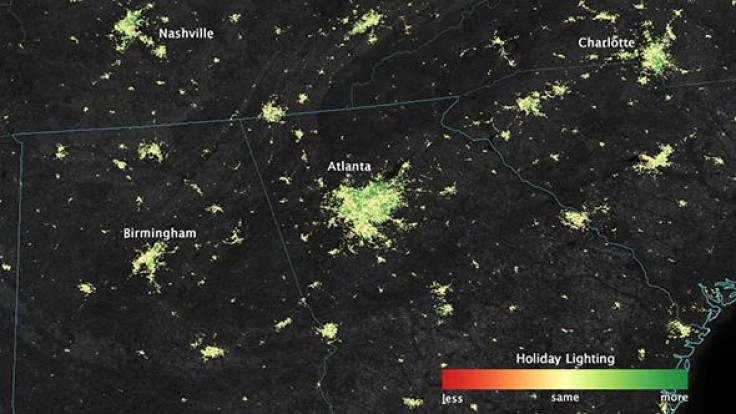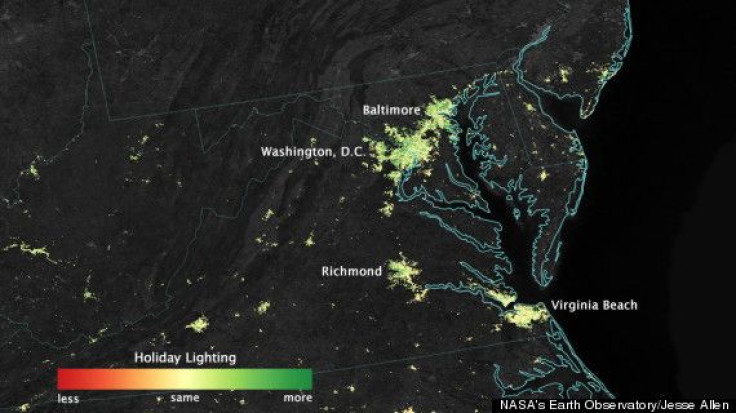Christmas Lights From Space: US Cities Glow In NASA Images Of US Holiday Displays [PHOTOS]

The glow of millions of U.S. homes will guide – or possibly blind – Santa and his reindeer this winter as they make their rounds from one brightly decorated house to the next. Images released this week by the National Aeronautics and Space Administration show the magnitude of holiday light displays across the country as seen from space. Scientists found that nighttime lights around major U.S. cities shone 20 percent to 50 percent brighter around Christmas, a surge that's both visually dazzling and wasteful.

The difference is most pronounced in suburbs and small towns where residents have bigger yards and bigger homes to work with, NASA scientists noted. "Overall, we see less light increases in the dense urban centers” compared to more rural ones, Eleanor Stokes, a NASA fellow and Ph.D. candidate at Yale University's School of Forestry and Environmental Studies, said in a statement. Lights were brightest between Thanksgiving and New Year’s Day.
The photos were taken by NASA’s Suomi NPP satellite, which was launched into orbit in October 2011 and whose mission is to collect data on the long-term effects of climate change. The satellite’s state-of-the-art Visible Infrared Imaging Radiometer Suite (VIIRS) instrument can record light even in the presence of clouds, moonlight and air particles. The images released this week were taken between 2012 and 2013 and include 70 American cities.

The purpose of the images wasn’t just aesthetic. NASA is gathering data it can use to study energy consumption as it relates to global warming. "Having a daily global dynamic dataset of nighttime lights is a new way for researchers to understand the broad societal forces impacting energy decisions," Stokes said. A recent U.K. study found that the average holiday light display consumed the equivalent of 22.8 days of electricity when switched on for just six hours, according to the Independent.

The idea behind the photos is to give U.S. policymakers better tools for understanding energy use across the country as they work toward reducing greenhouse gas emissions – the primary catalyst for man-made climate change – and improving energy efficiencies.
"More than 70 percent of greenhouse gas emissions come from urban areas," NASA researcher Miguel Román said. "If we're going to reduce these emissions, then we'll have to do more than just use energy-efficient cars and appliances. We also need to understand how dominant social phenomena, the changing demographics of urban centers, and socio-cultural settings affect energy-use decisions."

© Copyright IBTimes 2024. All rights reserved.












